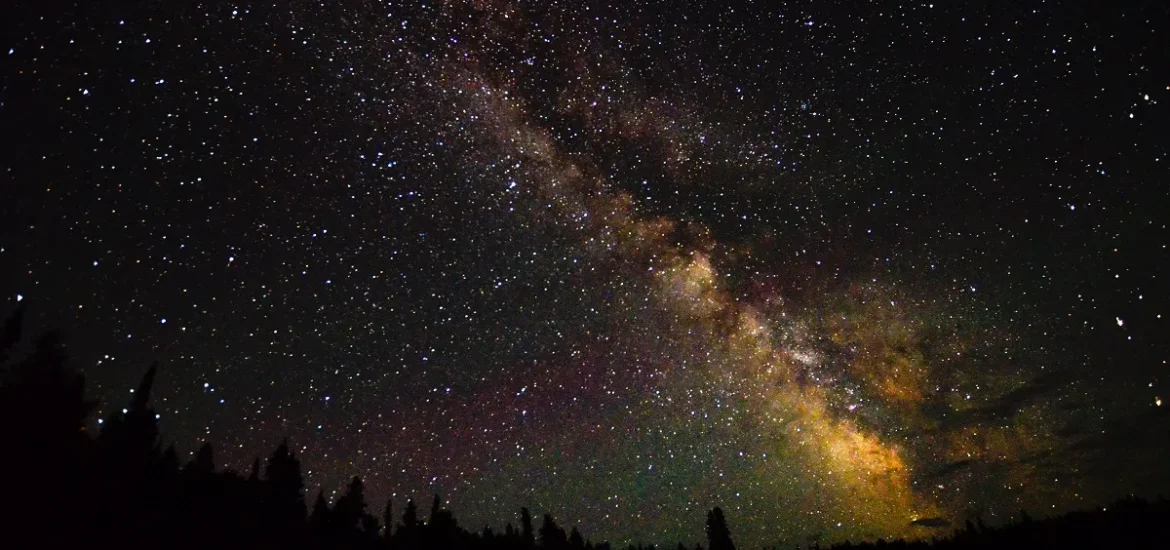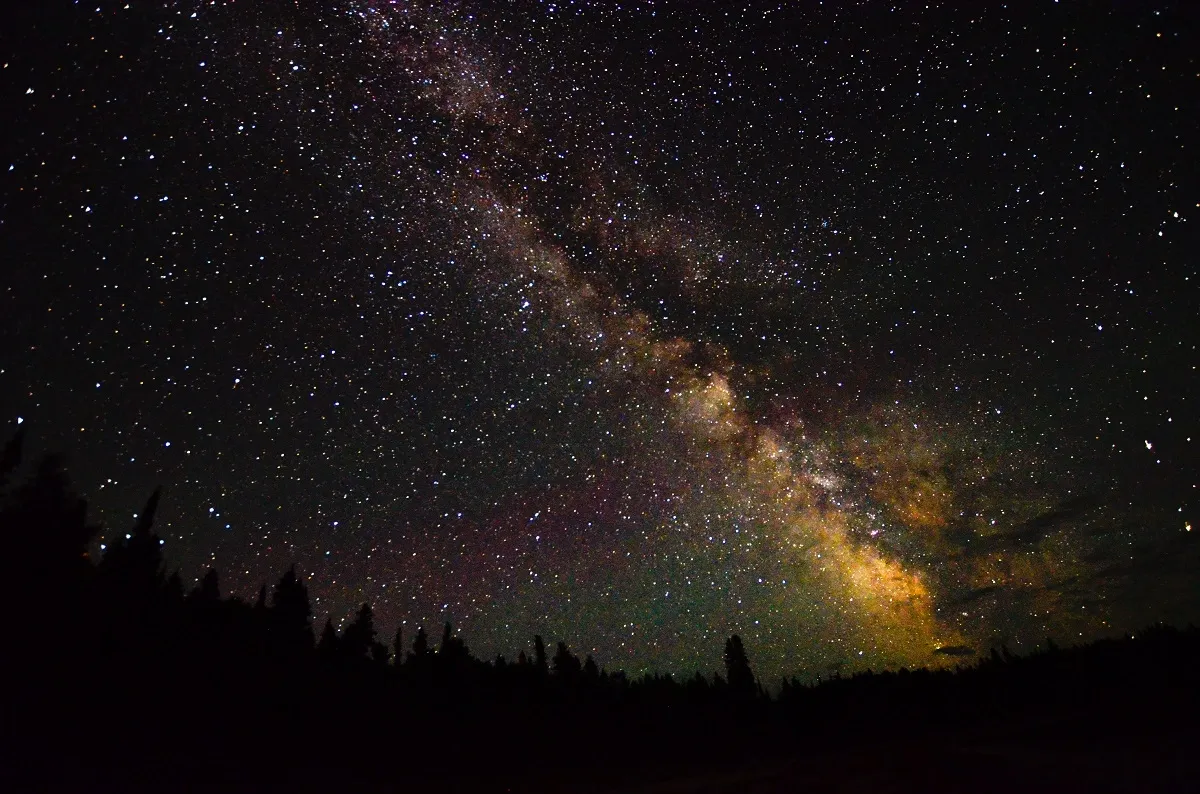
Stargazing near Toronto offers an escape from city lights that many residents never knew existed. Surprisingly, with roughly 80 percent of Canada uninhabited, there are pristine wilderness areas just waiting for you to discover the wonders of the night sky.
Ontario boasts three protected Dark-Sky Preserves and three additional stargazing areas, each offering unique celestial viewing opportunities. Torrance Barrens was actually the first location in Canada to receive official dark-sky designation, while Point Pelee National Park became the first national park recognized by the Royal Astronomical Society of Canada in 2006. If you’re looking for stargazing spots near me, these protected areas create perfect conditions for witnessing everything from constellations to the Milky Way. Furthermore, stargazing in Ontario is best experienced between May and October when skies are clearer and temperatures more comfortable.
Whether you’re a seasoned astronomer or simply someone who appreciates natural beauty, these dark sky near Toronto locations provide an unforgettable glimpse into the cosmos. Pack your telescope, grab a blanket, and prepare to be amazed by these seven spectacular stargazing destinations you never knew existed so close to home.
Torrance Barrens Dark Sky Preserve
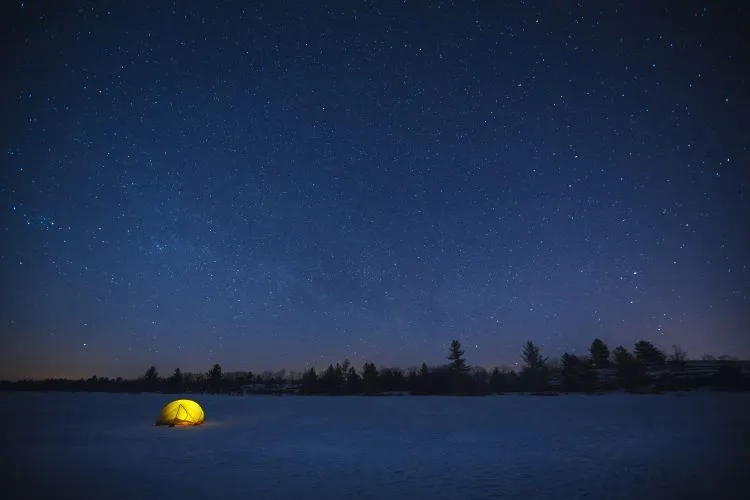
Image Source: Destination Ontario
Just two hours north of Ontario’s bustling capital lies the world’s first permanently designated Dark Sky Reserve, an astronomical gem that promises breathtaking cosmic views. Established in 1999, Torrance Barrens offers celestial experiences that even seasoned stargazers find extraordinary.
Torrance Barrens location and accessibility
Nestled in the District of Muskoka, Torrance Barrens Conservation Reserve spans an impressive 1,906 hectares of protected crown land. This unique preserve sits approximately 180 km north of Toronto, making it an ideal destination for city dwellers seeking stargazing near Toronto.
To reach this stargazing spot near me, you have two primary routes:
- From Highway 11 (traveling north): Access District Road 13/Southwood Road and drive west for about 20 minutes until you see the Torrance Barrens sign on your right.
- From Highway 169: Enter Southwood Road from the village of Torrance (between Gravenhurst and Bala), continuing for 10-15 minutes. Turn left at the second train-track crossing and drive another 5 minutes to find the entrance sign.
The site features a small main parking lot equipped with two portable toilets. Additionally, the preserve offers three well-marked trails for hiking and mountain biking enthusiasts who arrive during daylight hours. Since the area lacks street lighting, expect slower driving speeds (50-60 km/h) once you leave main highways.
Torrance Barrens stargazing features
What makes this dark sky near Toronto location truly exceptional is its complete absence of artificial light. The preserve is virtually surrounded by protected or undeveloped land, creating a natural buffer from urban lighting. This isolation, combined with the unique landscape, creates perfect conditions for astronomical observation.
The area’s vast expanses of Canadian Shield bedrock provide several advantages for stargazers:
- Unobstructed 360-degree panoramic views of the cosmos
- Solid, vibration-free surface ideal for telescopes and astrophotography
- Natural open spaces without surrounding high hills
Under these pristine conditions, you can witness celestial wonders with remarkable clarity. On clear nights, the Andromeda Galaxy becomes visible to the naked eye. With basic equipment like binoculars or a simple telescope, you can observe:
- The cloud bands of Jupiter
- Saturn’s distinctive rings
- Dazzling meteor showers
- The Milky Way in striking detail
The main viewing area lies on smooth granite outcrop immediately behind the Ministry sign on Southwood Road, accessible by vehicle for easy transport of equipment. For an enhanced experience with unobstructed views, walk along the main trail, across the boardwalk, and up to the first ridge.
Best time to visit Torrance Barrens
The Torrance Barrens Conservation Area remains open year-round, both day and night. Nevertheless, several factors affect optimal viewing conditions.
For the most memorable stargazing Ontario experience, monitor weather reports and sky forecasts before planning your visit. The Clear Dark Sky website provides accurate predictions of cloud cover and viewing conditions specifically for the preserve.
Though possible throughout the year, fall and winter generally offer superior opportunities for witnessing special phenomena like the Northern Lights. However, summer months provide more comfortable temperatures for extended night viewing.
Consider moon phases when planning your trip—near-full moons create brighter skies that diminish visibility of fainter celestial objects. Consequently, new moon periods offer optimal conditions for observing deep space objects.
Weekdays typically see fewer visitors than weekends, providing a more peaceful experience. During popular celestial events or meteor showers, expect larger crowds and plan accordingly.
Unlike some stargazing destinations, Torrance Barrens offers the convenience of camping with six designated sites available on a first-come, first-served basis. These official sites, marked by orange tent signs, each feature a fire cairn and backcountry bathroom facility.
Lennox and Addington Dark Sky Viewing Area
Located in southeastern Ontario, the Lennox and Addington Dark Sky Viewing Area stands as the most southerly dark sky site in the province, offering an authentic night sky experience comparable to what people enjoyed more than a century ago. This hidden astronomical treasure provides city dwellers with remarkable celestial views without requiring extensive travel.
Lennox and Addington location and accessibility
Situated just 37 kilometers north of Napanee and 11 kilometers south of Kaladar on Highway 7, this viewing area offers exceptional accessibility for stargazers seeking dark skies relatively close to urban centers. The site can be found at 7980 County Road 41, making it straightforward to locate with GPS.
For those traveling from Toronto, several transportation options exist:
- Train: The fastest option at approximately 2 hours 45 minutes, with VIA Rail service from Toronto Union Station to Napanee
- Car: A drive of about 3 hours covering roughly 146 miles—the most economical choice at around CAD 47-49
- Bus: FlixBus offers service to Madoc (4 hours) or you can take Toronto Airport bus to Napanee (5 hours)
The southern portion of Lennox and Addington County lies along Lake Ontario’s northeast coastline west of Kingston, easily accessible via Highway 401 East from Toronto or Highway 7 from Ottawa.
Lennox and Addington stargazing features
The viewing area boasts a measurement of 2.5 on the Bortle Scale, indicating exceptionally dark skies. This rating allows visitors to experience the night sky as it appeared over 100 years ago, virtually untouched by light pollution.
The site features several impressive amenities:
- A large concrete pad perfect for setting up telescopes and cameras with a clear North marker
- Ample parking with a well-designed barrier wall that prevents vehicle headlights from interfering with stargazing
- Solar electricity allowing serious astronomers to power their equipment
- On-site toilet facilities
- Accessibility improvements including an accessible ramp from the parking lot
Notably, the area’s unique geography creates ideal conditions for astronomical observation. Aside from minimal glow on the southern horizon from Napanee, the sky remains completely devoid of light pollution. This pristine environment allows visitors to observe the Milky Way, Polaris, planets like Mars and Venus, and numerous constellations with the naked eye.
Best time to visit Lennox and Addington
The viewing area remains open year-round from dusk until dawn with free admission. Nevertheless, optimal viewing occurs during moonless nights when fainter stars become more visible.
For 2025, the new moon dates to mark on your calendar include:
- May 26, June 25, July 24
- August 23, September 21, October 21
- November 20, December 19
The site hosts popular monthly events from April through October. These include Laser-Guided Stargazing Tours on Friday and Saturday nights near new moons, lasting approximately 90 minutes each. Moreover, special “Astrophotographers Assemble” events cater specifically to night sky photographers.
One particularly notable celestial event is the Perseid meteor shower, visible from July 17 to August 23, 2025, with its peak occurring overnight on August 12-13. Essentially, if you watch for at least 15 minutes during this peak, you’re guaranteed to see at least one meteor—often many more.
The site has gained tremendous popularity, particularly among visitors from urban areas. Events frequently sell out, with approximately 1,000 people registering for the free guided tours, primarily coming from light-polluted regions like the Greater Toronto Area, Ottawa, and Montreal.
Bruce Peninsula National Park
At the northern tip of a peninsula dividing Lake Huron and Georgian Bay sits one of Ontario’s astronomical treasures. Bruce Peninsula National Park, designated a Dark-Sky Preserve in 2009, offers stargazers a magical retreat where thousands of stars illuminate the night sky.
Bruce Peninsula location and accessibility
Situated approximately 300 kilometers from Toronto, Bruce Peninsula National Park occupies the northern end of the peninsula, spanning an impressive 154 square kilometers. This wilderness area creates the perfect buffer against urban light pollution, making it an ideal stargazing spot near you.
Getting to Bruce Peninsula offers several options:
- Highway route: Access the park via Highway 6, which extends north from Hamilton through Owen Sound and Wiarton. The driving distance from Toronto is approximately 204 km, taking roughly 3-4 hours.
- Parkbus service: For those without vehicles, Parkbus provides an environmentally friendly transportation option from the Greater Toronto Area. Their services include affordable day trips to the park.
- Ferry option: From spring through fall, you can reach the park via the MS Chi-Cheemaun ferry operated by Owen Sound Transportation Company. Check their schedule online or call 519-596-2510 for details.
The park features multiple access points including Cyprus Lake, Singing Sands, Halfway Log Dump, and the Visitor Center. Due to its popularity, advance planning and reservations are strongly recommended.
Bruce Peninsula stargazing features
Unlike crowded city skies where merely 30 stars might be visible, the Bruce Peninsula’s dark skies reveal over 5,000 stars to the naked eye. This remarkable visibility explains why Bruce Peninsula National Park earned its designation as a Dark Sky Preserve by the Royal Astronomical Society of Canada.
The park offers two designated stargazing observation areas:
- Cyprus Lake area: Located near the main facilities, this site has recorded sky quality meter readings of 21.5 mag/arcsec², indicating exceptionally dark conditions.
- Singing Sands: Positioned on the southwest side of Highway 6 from the Cyprus Campground, this coastal site features no lights and a low horizon, creating perfect conditions for unobstructed celestial viewing.
Under these pristine conditions, visitors can witness astronomical wonders rarely seen near urban areas. The Milky Way shines brilliantly with tremendous structure and contrast. Additionally, you can observe star clusters like the Pleiades, meteor showers, comets, and even one of Southern Ontario’s best displays of Northern Lights. Perhaps most remarkably, Andromeda, our neighboring galaxy 2.5 million light-years away, becomes visible to the naked eye.
Best time to visit Bruce Peninsula
Although camping is possible year-round, winter camping options are limited as access roads off Highway 6 leading to more remote areas aren’t plowed during winter months. For optimal stargazing conditions, summer through early fall provides more comfortable temperatures for extended night viewing.
Bruce Peninsula offers unique stargazing programs throughout the summer. The Bayside Astronomy program, hosted by the Bruce Peninsula Biosphere Association, provides free educational sessions where visitors can:
- Learn about the importance and beauty of dark skies
- View constellations, planets, and deep sky objects through telescopes
- See Saturn’s rings, Jupiter’s moons, and distant galaxies up close
This program runs on Sundays at Singing Sands in Bruce Peninsula National Park from Canada Day to Labor Day, offering an excellent opportunity for guided stargazing. The program also visits other locations throughout the week, including Miller’s Family Camp on Mondays and Summer House Park on Wednesdays.
For safety, remember that cell phone service isn’t always reliable within the park. Always bring appropriate footwear, clothing for all weather conditions, and sufficient water and food when planning a stargazing excursion.
Point Pelee National Park
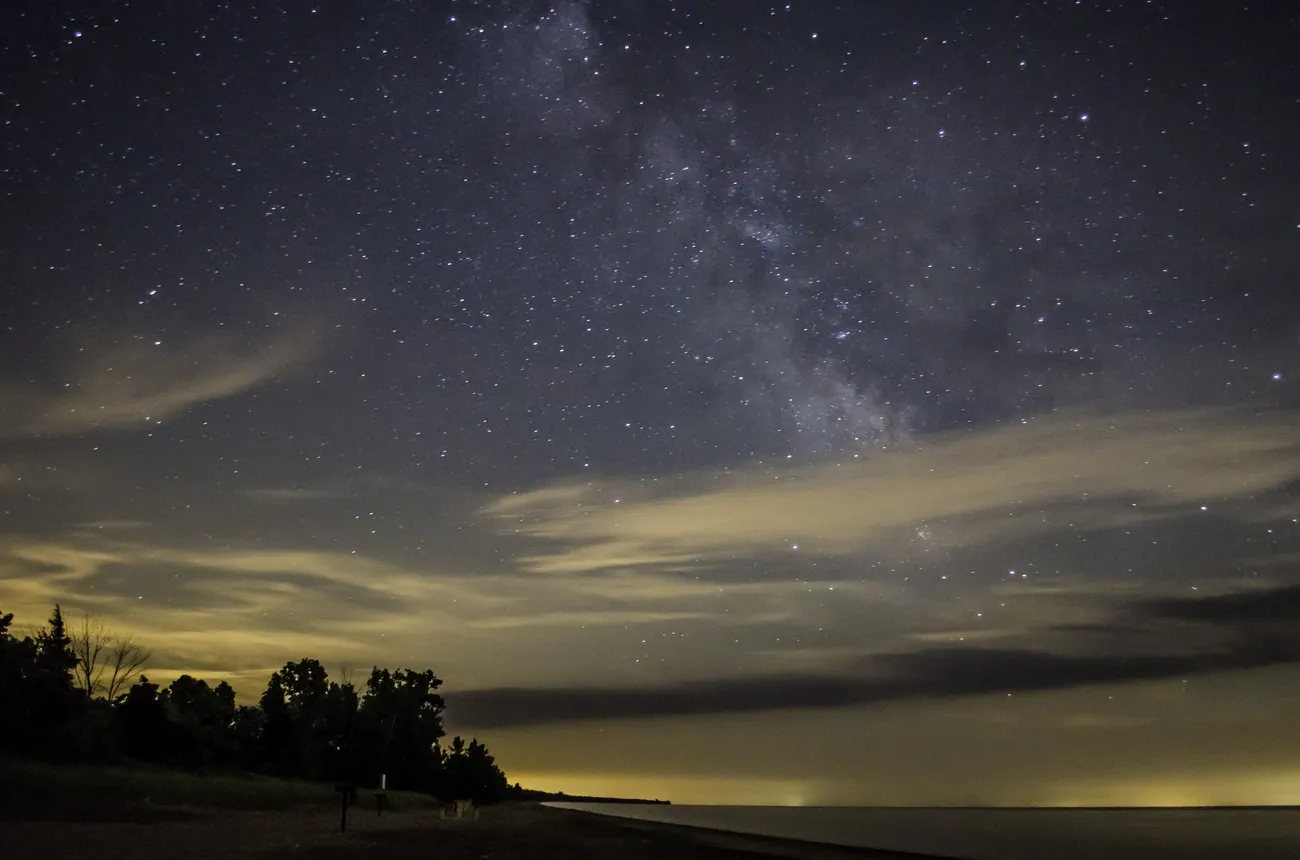
Image Source: RASC.ca
Claiming its place in astronomical history, Point Pelee National Park became Canada’s first national park designated as a dark sky preserve in 2006. This southernmost tip of mainland Canada offers a celestial experience where thousands of stars pierce the night sky – a stark contrast to city views where light pollution washes out all but the brightest heavenly bodies.
Point Pelee location and accessibility
Situated at the southernmost point of mainland Canada, Point Pelee National Park lies approximately 350 kilometers from Toronto. The journey typically takes about three and a half hours by car, making it an accessible weekend destination for stargazing enthusiasts. The park sits just 65 km from Windsor, 180 km from London, and 355 km from Toronto.
Reaching this dark sky near Toronto is straightforward by car:
- From Highway 401 (eastern approach): Take exit 48 toward Leamington, follow Highway 77 south to County Road 33, then continue to the park entrance via Point Pelee Drive
- From Highway 3 (western approach): Follow directional signs through Leamington until reaching Point Pelee Drive
The park features ample parking with over 700 spaces available at various locations, including the Visitor Center, Marsh Boardwalk, and beach facilities. Currently, no public transit options serve the park directly.
Point Pelee stargazing features
As a designated Dark Sky Preserve, Point Pelee commits to protecting the night environment from artificial lighting. This commitment creates ideal conditions for stargazing Ontario experiences, allowing visitors to witness astronomical wonders typically invisible near urban centers.
Under these protected conditions, visitors can observe:
- Thousands of stars (compared to merely 100 visible from city locations)
- The rings of Saturn and colored bands of Jupiter
- The Milky Way in striking detail
The park’s core area boasts an impressive nighttime sky quality level of approximately 21.2-21.5 mag/arcsec². For optimal viewing, head to West Beach or the Visitor Center parking lots—the best car-accessible stargazing locations in the park. Upon arrival, you can pick up a seasonal star chart at the entrance kiosk.
Best time to visit Point Pelee
Throughout 2025, Point Pelee offers designated Dark Sky Nights when the park remains open until midnight. On these special evenings, park staff turn off as many lights as possible, creating optimal conditions for stargazing spots near me experiences.
The 2025 Dark Sky Night schedule includes:
- January 4, February 22, March 22, April 26
- May 31, June 21, July 19
- September 20, October 25, December 13
Plus, a highlight for serious stargazers: the park stays open all night August 12-13 for the Perseid meteor shower, featuring 20-30 shooting stars per hour.
During many of these events, members of the Royal Astronomical Society of Canada (RASC) Windsor Center bring telescopes to facilitate stargazing. Their presence enhances the experience, especially for newcomers witnessing celestial wonders for the first time.
Even though the park operates year-round, its regular hours from May 20 to September 1, 2025, are 6 a.m. to 10 p.m.. This summer period coincides with warmer weather, making it ideal for extended night viewing.
For overnight accommodations, the park offers one campground with 24 oTENTiks at Camp Henry. Reservations can be made through Parks Canada’s reservation service, but plan ahead as these spots fill quickly during peak stargazing seasons.
North Frontenac Astronomy Park
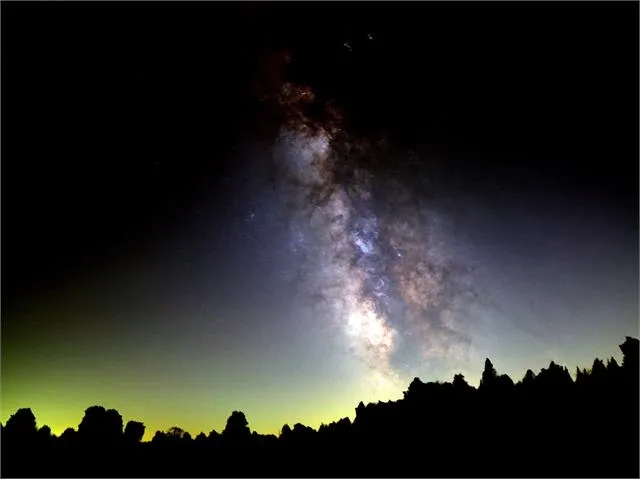
Image Source: Township of North Frontenac
Making astronomical history in 2013, North Frontenac Township became the first municipality in Canada to receive Dark Sky Preserve status from the Royal Astronomical Society of Canada. This hidden gem boasts some of the darkest night skies in all of Southern Ontario, offering spectacular views that city dwellers rarely experience.
North Frontenac location and accessibility
Spanning an impressive 1164km², North Frontenac is situated approximately two hours from Ottawa and offers easy access for stargazers coming from multiple directions. From Toronto, you can reach this stargazing spot by driving east for three hours via the 401 Expressway. For those traveling from Ottawa, the journey takes roughly two hours driving west along Highway 7.
The main viewing area, officially named North Frontenac Astronomy Park, is located at 5816 Road 506, just six kilometers southwest of Plevna, Ontario. For GPS navigation, use the coordinates 44.91791, -76.93947. This convenient location places it about thirty minutes from Bon Echo Park and approximately twenty minutes off Highway 41 in Cloyne.
In relation to larger urban centers, the park sits about 116km southeast of Kingston and 140km northeast of Ottawa, making it an accessible weekend destination for stargazing Ontario enthusiasts.
North Frontenac stargazing features
What truly sets this dark sky near Toronto location apart is its exceptional darkness rating. In fact, North Frontenac boasts the darkest skies in all of Southern Ontario. This exceptional quality stems from the area’s low population density and considerable distance from large urban centers.
The Astronomy Park features numerous amenities designed specifically for stargazers:
- A concrete viewing pad ideal for setting up telescopes and equipment
- Electrical service for powering astronomical equipment
- An information station with educational materials
- Accessible washrooms (two privies with handrails)
- Ample parking spaces
- Picnic tables for comfortable viewing sessions
First of all, while the site isn’t officially designated as “fully accessible,” significant measures have been taken to ensure people using mobility aids can reach both the concrete viewing pad and washrooms. The short path from the gravel parking lot to the viewing pad has a manageable incline that can reasonably be traversed by those using mobility aids.
A crown jewel of the park, the North Frontenac Observatory officially opened in August 2021 and houses the Fred Lossing Telescope. During special events, visitors often have the opportunity to look through this impressive instrument alongside telescopes brought by local astronomers and volunteers.
Best time to visit North Frontenac
The North Frontenac Astronomy Park remains open year-round to the public, enabling stargazing experiences across all seasons. Nevertheless, for optimal viewing conditions, plan your visit during nights with clear skies and minimal moonlight.
Throughout the year, the park hosts various themed astronomical events including:
- International Astronomy Day celebrations
- Perseid meteor shower viewing parties
- Sun parties during daylight hours
- Special programs featuring galaxies, nebulae, planets, and constellations
To stay informed about upcoming events, check the Township’s website and the Dark-Sky Preserve’s Facebook page for announcements and schedules. Meanwhile, a new group called the North Frontenac Amateur Astronomy Club has formed and will be active in future events.
Remember that several factors affect stargazing quality. Ideally, crisp, clear winter nights when the moon is in crescent or gibbous phase provide the best viewing conditions. Additionally, moving to higher ground helps obtain clearer views of the horizon.
For practical considerations, note that overnight camping is not permitted at the site itself. Limited services are available in nearby Plevna (8km north), though various accommodations can be found scattered throughout the Township.
Bluewater Outdoor Education Center
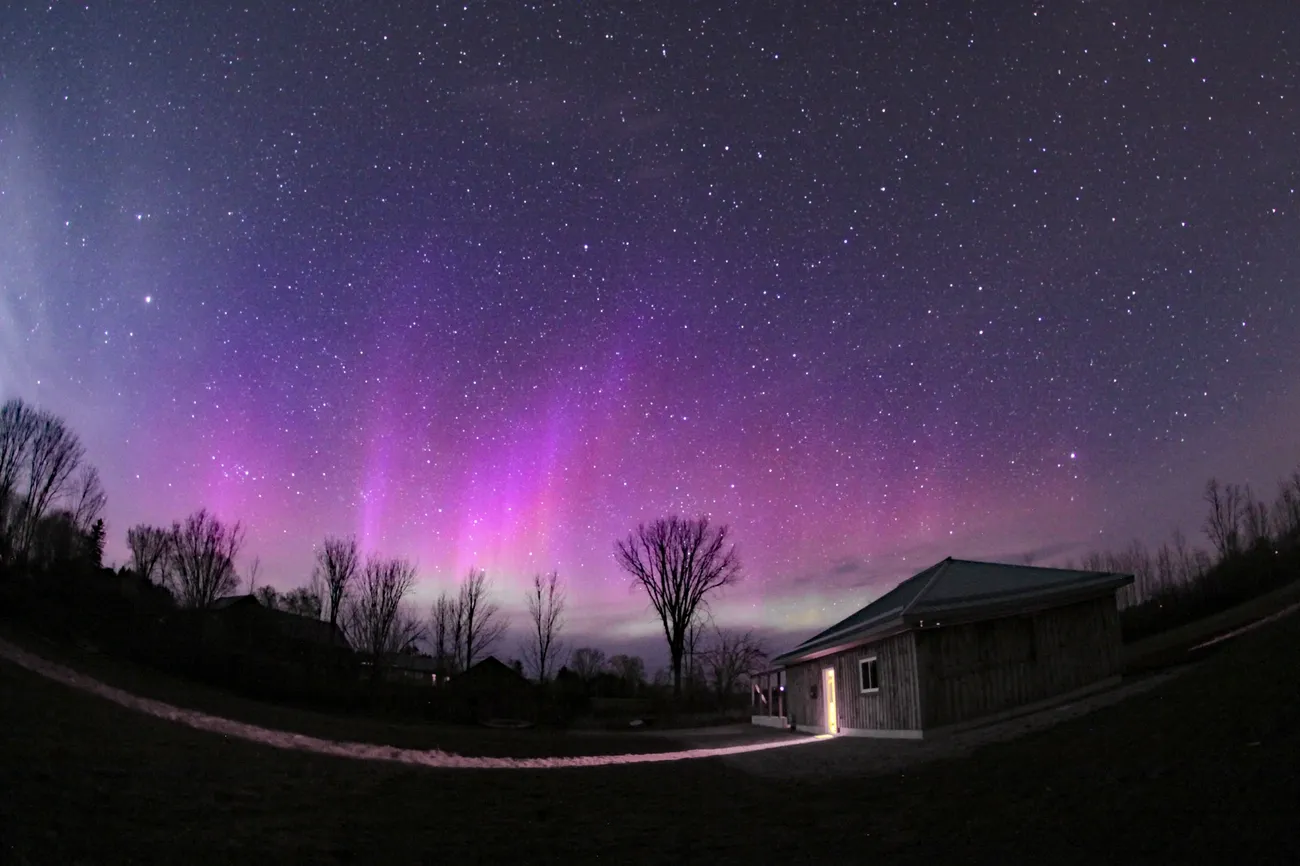
Image Source: RASC.ca
Tucked away on Ontario’s beautiful Bruce Peninsula, Bluewater Outdoor Education Center earned its prestigious Dark-Sky Preserve designation in 2012 through a partnership between the Bluewater Astronomical Society and the Bluewater Education Foundation. This hidden stargazing gem offers celestial enthusiasts yet another pristine location for observing the night sky away from urban light pollution.
Bluewater location and accessibility
Situated near the base of Ontario’s Bruce Peninsula, the Bluewater Outdoor Education Center sits approximately 9 km west of Highway 6 at Wiarton, directly on Bruce County Road 13. This 320-acre site occupies a prime position between Lake Huron and Georgian Bay, creating ideal conditions for stargazing.
For those seeking this dark sky near Toronto location, the exact address is 3092 Bruce County Road 13, South Bruce Peninsula, ON N0H 2T0. When visiting, you’ll find two distinct parking areas:
- East parking area (closest to the Barn & Classrooms) for regular visitors
- West parking area (closest to Dining & Dormitory building) reserved for busses
Regarding accessibility, the Observatory is wheelchair-accessible despite being a 200m walk from the Bruce Power Learning Center. Upon arrival, park in the main lot by the Learning Center and follow the path down to the observatory.
Bluewater stargazing features
What makes this stargazing Ontario site truly special is its facilities dedicated to astronomical observation. The E.S. Fox Observatory houses an impressive 28-inch Webster Dobsonian reflector telescope, offering spectacular views of celestial objects.
The observatory forms the centerpiece of this Dark Sky Preserve, officially recognized by the Royal Astronomical Society of Canada. For optimal viewing experiences, stargazers frequently utilize:
- The field on the southeast portion of the property
- The area immediately surrounding the Observatory
Best time to visit Bluewater
While primarily serving school groups, the Bluewater Astronomical Society hosts public viewing nights at the Observatory approximately once per month. These events include guided star tours and video astronomy presentations, making them ideal for both beginners and experienced stargazers.
For planning purposes, nighttime access is only permitted during these scheduled public events. To attend, it’s recommended you contact the society via their website to reserve your spot, as this helps them anticipate attendance numbers.
Remember that no accommodations exist at the observatory itself, though several options are available nearby:
- Multiple campgrounds within 4km (Oliphant Family Campground, Trillium Woods Campground, and Spry Lake Campground)
- Various accommodations in Wiarton including motels, resorts, cottages, and B&Bs
Considering seasonal factors, winter viewing requires warm clothing as temperatures can drop significantly, whereas bug spray becomes essential during warmer months.
Manitoulin Eco Park
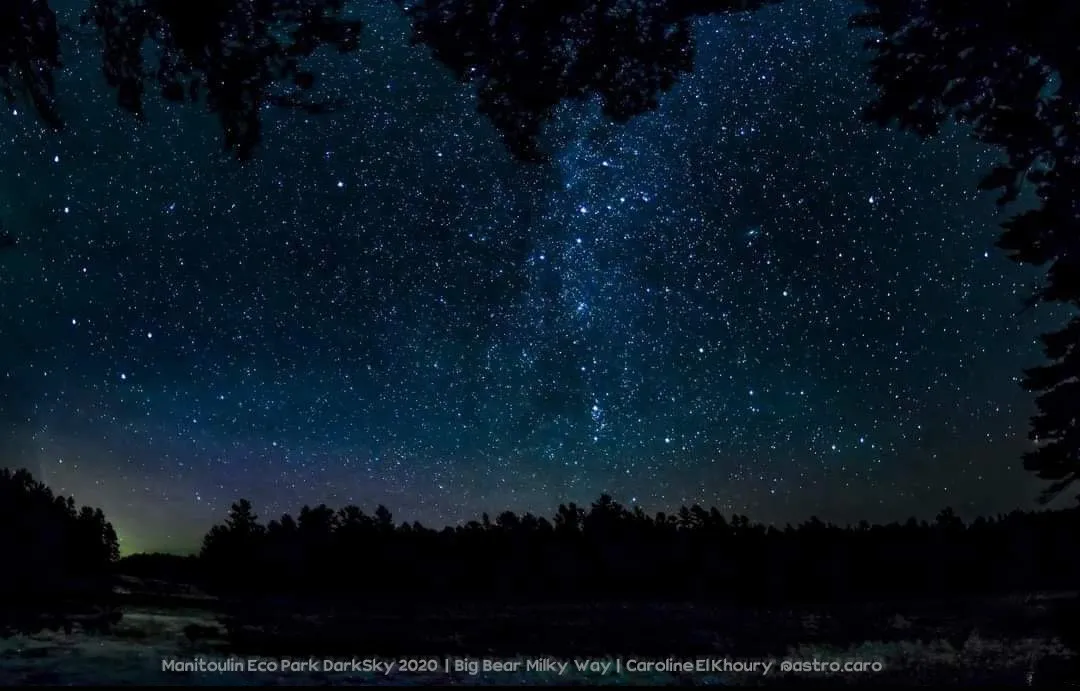
Image Source: Manitoulin Eco Park
As the world’s largest freshwater island, Manitoulin offers an extraordinary stargazing sanctuary at Manitoulin Eco Park—Canada’s first Royal Astronomical Society of Canada (RASC) designated commercial Dark Sky Preserve. This hidden astronomical treasure provides celestial views so clear that the Milky Way appears in such detail that seeing it feels like a first-time experience.
Manitoulin Eco Park location and accessibility
Nestled in Tehkummah at the southeast corner of Manitoulin Island, this stargazing spot sits at 18777 Highway ON-6 North. The 268-acre property includes a dedicated 70-acre Dark Sky Preserve portion featuring a large observation field with unobstructed 360-degree sky views.
For travelers seeking this dark sky near Toronto location, consider these travel times:
- Approximately 5.5 hours from Vaughn
- About 6.25 hours from Hamilton
- Roughly 6.5 hours from Guelph
Access options include driving via the swing bridge at Little Current (35 minutes from the park) or taking the Chi-Cheemaun Ferry to South Baymouth (15 minutes from the park). For ferry travelers, calling ahead may secure bookings even when online systems show limited availability.
Manitoulin Eco Park stargazing features
Within the preserve’s hardwood forest setting, visitors can witness shimmering stars and constellations in vivid detail. Under optimal conditions, the skies reveal 7.5+ magnitude stars, creating some of the best stellar shows outside the epic north.
The preserve strictly enforces a no-white-light policy after sunset—this includes prohibiting campfires, cell phone screens, and vehicle headlights. Instead, visitors may use only amber or red filtered lights for safety.
Forthwith, the park offers various astronomy-focused experiences:
- Educational astronomy nights with professional equipment
- Semi-private sessions with individualized attention
- Night hikes combining nocturnal wildlife observation with star orientation
Best time to visit Manitoulin Eco Park
The 2024-2025 period marks an anticipated Solar Maximum, making it an ideal time for hunting Northern Lights and Aurora Borealis displays. Among special events, the Perseid Meteor Shower weekends stand out, featuring up to 60 beautifully colored meteors streaming across the sky hourly.
Overnight accommodations include forest camping sites, the Stargazing Cabin (winterized for cold-season viewing), and the Milky Way Bunkie. Winter visitors can enjoy the woodstove-heated Stargazing Cabin before venturing out to witness remarkably clear skies.
Besides regular programming, the park hosts special events with guest speakers from various science and astronomy backgrounds, providing entertaining and educational experiences for entire families.
Comparison Table
| Location | Distance from Toronto | Dark Sky Designation | Key Features/Amenities | Best Viewing Times | Accessibility/Parking |
|---|---|---|---|---|---|
| Torrance Barrens | 180 km | 1999 (First in Canada) | – 360-degree views – Granite outcrops for telescopes – 6 camping sites – Portable toilets | – Year-round access – Fall/winter best for Northern Lights – New moon periods optimal | – Small main parking lot – Three marked trails – 2 hours north of Toronto |
| Lennox & Addington | ~250 km | Not mentioned | – Concrete pad with North marker – Solar electricity – Toilet facilities – Accessible ramp | – Monthly events Apr-Oct – New moon dates – Moonless nights best | – Ample parking – 37 km north of Napanee – Well-designed barrier wall |
| Bruce Peninsula | 300 km | 2009 | – Two observation areas – 5,000+ visible stars – Guided astronomy programs | – Summer through early fall – Sunday programs (Canada Day-Labor Day) | – Multiple access points – Parkbus service available – Ferry option available |
| Point Pelee | 350 km | 2006 | – 700+ parking spaces – Seasonal star charts – West Beach viewing area | – Dark Sky Nights (monthly) – Summer (May-Sept) – Perseid meteor shower (Aug) | – Ample parking – No public transit – 24 oTENTiks available |
| North Frontenac | ~300 km | 2013 | – Concrete viewing pad – Electrical service – Observatory – Accessible washrooms | – Year-round access – Winter nights optimal – Regular astronomy events | – Gravel parking lot – Wheelchair accessible pad – No overnight camping |
| Bluewater | Not mentioned | 2012 | – 28-inch telescope – E.S. Fox Observatory – Wheelchair accessible | – Monthly public viewing nights – Access only during scheduled events | – Two parking areas – 200m walk to observatory – No on-site accommodation |
| Manitoulin Eco Park | 6.5 hours | Not mentioned | – 70-acre Dark Sky Preserve – 360-degree views – Stargazing cabin | – Solar Maximum 2024-2025 – Perseid meteor shower weekends | – Access via swing bridge or ferry – Multiple accommodation options |
Conclusion
These seven remarkable stargazing destinations prove you don’t need to travel far from Toronto to witness the wonders of the night sky. Despite our busy urban lifestyles, pristine dark skies exist just a few hours’ drive away, offering celestial experiences most city dwellers rarely encounter. Whether you prefer the historic significance of Torrance Barrens, Canada’s first Dark Sky Preserve, or the family-friendly programs at Point Pelee National Park, options abound for every type of stargazer.
Planning your adventure becomes straightforward with the comparison table provided above. Different locations offer varied amenities – from concrete viewing pads and electrical hookups to professional telescopes and guided programs. First-time stargazers might appreciate the educational experiences at Lennox and Addington or Bruce Peninsula, while experienced astronomers may seek the exceptionally dark skies of North Frontenac.
Weather conditions and moon phases significantly impact your stargazing experience. Consequently, checking astronomical forecasts before your trip ensures optimal viewing. Summer and early fall generally provide more comfortable temperatures, though winter skies often offer superior clarity for observing deep space objects.
Accessibility remains a priority at many sites, with several locations offering wheelchair-accessible viewing areas and facilities. Additionally, most preserves maintain strict lighting policies to protect the darkness essential for stellar observation.
Stars have guided humans throughout history, yet light pollution now prevents many from experiencing truly dark skies. Thankfully, these seven destinations allow you to reconnect with this ancient wonder. Pack your blankets, grab your binoculars, and prepare for an awe-inspiring glimpse into the cosmos – all without venturing far from home. The universe awaits just beyond Toronto’s city lights.
FAQs
Q1. What is the closest dark sky location to Toronto for stargazing?
The Torrance Barrens Dark Sky Preserve, located about 180 km north of Toronto, is one of the closest and most accessible dark sky sites. It was Canada’s first designated dark sky preserve and offers exceptional stargazing conditions with minimal light pollution.
Q2. When is the best time to go stargazing in Ontario?
The best time for stargazing in Ontario is generally between May and October when skies are clearer and temperatures more comfortable. However, crisp winter nights can also provide excellent viewing conditions. For optimal stargazing, plan your visit during a new moon phase and on nights with clear weather forecasts.
Q3. What celestial objects can I see at Ontario’s dark sky preserves?
At Ontario’s dark sky preserves, you can observe thousands of stars, the Milky Way in striking detail, and even neighboring galaxies like Andromeda with the naked eye. With basic equipment, you may see Saturn’s rings, Jupiter’s cloud bands, and various deep sky objects. During certain times of the year, you might also witness meteor showers and the Northern Lights.
Q4. Are there guided stargazing programs available at these locations?
Yes, many of Ontario’s dark sky preserves offer guided stargazing programs. For example, Point Pelee National Park hosts Dark Sky Nights with staff and volunteers from the Royal Astronomical Society of Canada. The Lennox and Addington Dark Sky Viewing Area offers monthly events including laser-guided stargazing tours. Always check the specific site’s schedule for upcoming events.
Q5. What should I bring for a stargazing trip in Ontario?
For a successful stargazing trip, bring warm clothing (even in summer), as temperatures can drop at night. Pack a red flashlight to preserve night vision, binoculars or a telescope if you have them, and a star chart or astronomy app. Don’t forget essentials like water, snacks, and bug spray. Some locations have limited facilities, so check in advance and prepare accordingly.

